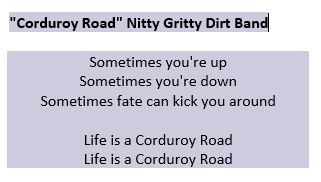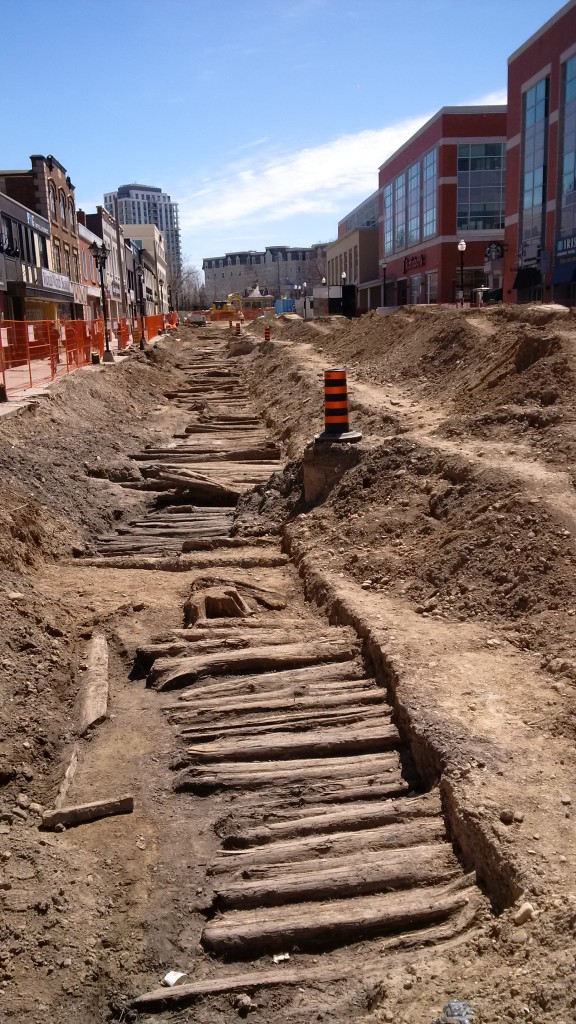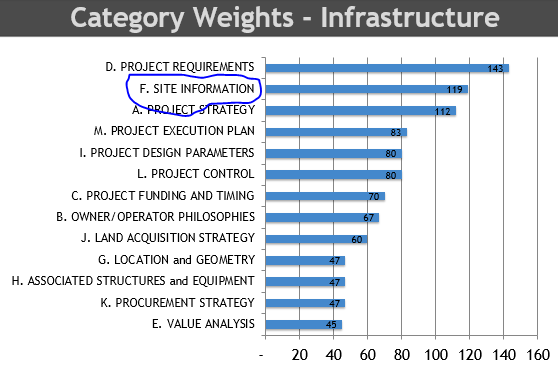Anytime you start to dig, there are risks that you might discover something that will delay a project. Today as I exited our office to take an afternoon walk I was reminded of how important an assessment of site conditions is during front end planning. While you can never know exactly what you’ll find, ensuring you add enough contingency to your cost and schedule for “unknown risks” due to site conditions is extremely important.
Al Capone and the Corduroy Road
Currently our municipality is engaged in the construction of a Light Rail Transit (LRT) system. This is a project that will have tremendously positive impact on the area for many generations to come. King Street, the road the LRT will follow, winds its way through three cities and was constructed 150 or more years ago – some estimates date it back to the 1790’s. It definitely has a rich and varied history, highlighting the entrepreneurial spirit of the area – including some prohibition era bootlegging shenanigans and even rumours of Al Capone’s gang having a shop in the area. It wasn’t surprising that when the excavators started digging they would come across all sorts of interesting historical finds. There are no signs of Al Capone’s vault yet, but a recent discovery brought construction of one stretch to a stand still.
Prior to the discovery of the Corduroy Road, construction crews were asked to stop work if they came across anything unusual…and then they did…
Front End Planning
Now let’s talk generally about Front End Planning and site conditions in infrastructure projects…
The risk associated with unknown site conditions in construction projects is significant and often results in schedule delays, cost increases, and dangerous working conditions. They can also invalidate design assumptions, putting short-term and long-term project performance at risk.
Collaborating with all project stakeholders early in front end planning won’t eliminate the risk of coming across a corduroy road, dinosaur bones or any other number of weird and whacky unknowns, but understanding the risks associated with “going underground” can help teams understand where problems might pop up, and help to develop contingency plans.
In fact, research done by the Construction Industry Institute (CII) to provide risk weightings for the Project Definition Rating Index (PDRI) shows the Site Information category is the second highest potential risk for infrastructure projects.
PDRI provides a great mechanism for identifying risk in front end planning and providing transparency to project stakeholders. The checklist of items associated with site information is rigourous, but a few stand out for projects like our LRT example including identifying site issues like:
- Old infrastructure to be removed or rearranged, or to remain in place
- Existing structural conditions
- Underground interference
Projects, like life, can be a corduroy road. Transparency on risk helps smooth out the bumps and result in better project performance.



